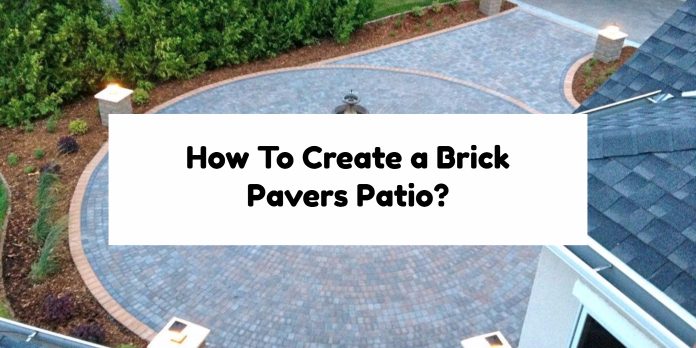he 1st call to form once considering a brick paver area is location. establish and mark off the realm of your out of doors way you will be operating with-you will mark it off with landscape flags, landscape marking paint or measurement tape. The latter are particularly useful in decisive the quantity of brick pavers you will ultimately would like for your area.
Once you’ve got a general plan of the area you will be operating with, you would like to come to a decision which type of brick pavers area unit right for your style. you’ll need legion designs from that to decide on, as well as non-tumbled (or smooth), tumbled (weathered), embossed/dimpled, tumbled and embossed/dimpled, or Associate in Nursing approximation of slate or flag.
Next up, you’ll have to come to a decision on color for your brick pavers. Earth tones area unit standard, however you’ll wish to appear 1st to the tones of your house, notably the roof color and trim, and check out to remain within the same family as these. you’ll additionally think about a different color palette or a daring, spirited statement color like red.
Finally, you’ll have to come to a decision however your brick pavers area unit arranged on the area. There area unit several choices, starting from easy staggered rectangular patterns to labyrinthine geometric shapes that wrestle Associate in Nursing nearly fashionable art twist. Some standard designs you’ll hear mentioned area unit Random I, Random stone, Runner and fabric. Before starting your project, you may want to look up the right ‘tools for brick layers‘ to see what you will need for this job and how the best go about it.
One of the foremost standard style trends for area landscaping is to emphasise visual diversity. therefore as an example, if your area pavers area unit a consistent geometric form, you’ll wish to think about curvy, flowing styles for your article of furniture or alternative area installations, to feature some obvious distinction. you may additionally accept exploitation Associate in Nursing array of planters for flowers or plants, as opposition making an attempt to match all of your area landscaping.
Finally, let nature in. think about planting shrubs or arrangement potted flowers or plants directly adjacent to your area, therefore the natural landscape seems like it is usually handy of your out of doors way.
Building a brick and stone area like ours does not take special skills. The casual, free-form style permits you to relax and be inventive instead of worrying concerning precise cutting and fitting.
It’s a massive project, however we’ll tell you everything you would like to understand to try to to it. during a nutshell:
Plan the dimensions.
Dig a hole concerning ten in. deep, and pack a 6-in. layer of gravel to create a flat base that slopes slightly for evacuation.
Set the stones and wall in a layer of sand and tamp them down therefore the surface is even.
Fill the cracks with sand, tamp again, then landscape round the new area and you are done.
This project is not technically troublesome, however be ready to devote an enormous chunk of your time and energy to that. you will haul several plenty of dirt, gravel, stone and brick before you are done. With atiny low crew of robust and bold helpers, you’ll end this brick Paving Blog poroject in lake forest Illinois 2 or 3 weekends, however operating alone at a leisurely pace, you will pay the higher a part of a summer.
We assembled our terrace from used street pavers that we tend to bought from a shop. singly, the bricks look to a small degree crude, coated with tar and well worn, however the general impact is ideal. Then we tend to selected tumbled Wisconsin rock for the border. The tumbling rounds the perimeters and provides the stone a worn look that enhances the country look of the used pavers.
You may not realize the precise materials we tend to used locally; check the stone dealers in your space to examine what is offered.
This area prices concerning the maximum amount as a premium-quality wood deck. the price of stone varies wide, though. betting on your location, you may pay plenty additional or plenty less.
The Character of the Stone Makes This Patio!
Stone varies greatly in color and texture. Visit variety of stone suppliers to examine what is offered in your space and to see costs. (See the phone book underneath “Stone” or “Landscaping.”) we tend to selected 3- or 4-in. thick stone meant for building walls, however any comparatively flat stone that is a pair of to four in. thick can work. as a result of stone is sold by the ton (we used 5- 1/2 tons), a agent stone like flag would are additional economical, however it wasn’t offered within the tumbled end we tend to wished. If you employ agent stone, do not tamp it with the compactor. it’ll crack. The stone dealer can tell you just about what percentage sq. feet plenty of every form of stone covers. Order a minimum of fifteen p.c additional to permit additional choice once you are looking for simply the correct form.
Concrete pavers area unit the foremost economical alternative for paving patios. they’re offered in several sizes and colours. ancient clay pavers have more true brick color and value slightly additional. Concrete pavers area unit offered reception centers and landscape retailers, however you will likely got to realize a shop to shop for clay pavers (in the phone book underneath “Brick” or online). you’ll have concerning 4-1/2 bricks for each square measure, forward a mean sized four x 8-in. brick. It’s troublesome to work the precise quantity of brick required for Associate in Nursing on an irregular basis formed area like this, therefore order concerning fifteen p.c additional.
putting in the stone giving birth border stone
Step 1: realize a decent website
Consider essential factors: ground slope, drainage, shade and obstacles like tree roots and underground utility lines.
A cozy spot is that the main demand for a area like this.
But you will additionally wish to think about the following:
Shade. you’ll be wanting it. If you do not have it, embrace shade arrangets or structures in your plan.
Drainage. Avoid low spots. decide spot that is well drained.
Slope. to a small degree slope, but concerning 1/4 in. per foot, is OK. quite that and you may got to build holding walls or regrade the encompassing soil.
Digging complications. do not build directly underneath trees. It might injury the tree, and besides, excavation out roots is not any fun. Contact native utility corporations before you dig and have them find buried lines.
Plan a method for obtaining the materials to and from your area location. Sand and gravel can arrive in dump trucks that area unit too significant be driven on your route or in your yard while not damaging them. you will likely got to use wheelbarrows. If it is a long run, raise your provider for a smaller truck or skid loader that may meet up with.
When you’ve got found an appropriate spot, build a rough sketch showing trees, shrubs and gardens, then take measurements. Transfer these measurements to paper, belongings every sq. equal one linear unit. Lay paper over your arrange and sketch within the stone border and bricks. Experiment with totally different styles, and once you come back up with a thought you prefer, use it to calculate the quantities of materials and assist you place the stones. keep in mind that this is often an informal, free-form area. make merry and let the arrange evolve as you’re employed.
Step 2: Order the bottom materials and stone
It’s what is beneath that counts.
Stone and brick area unit what you see, however the landscape cloth, gravel and sand area unit what hold them along and build your area last. If your stone or brick provider does not have these merchandise, check on-line or within the phone book underneath “Landscape instrumentation and Supplies” or “Sand and Gravel.”
Landscape cloth stabilizes the soil beneath the gravel base by keeping them apart whereas permitting water to empty through. we tend to used 12-1/2 linear unit. wide, heavy, woven stabilization cloth purchased from our stone provider. If this is not offered, use the widest landscape cloth you’ll realize.
Class V (“five”) rock forms the muse of our terrace, however there could also be totally different materials offered in your region. Any granular fill can work as long because the size of the granules ranges from 3/4 in. all the way down to a powder and they are angular, not sleek and spherical. These qualities enable the fill to be tightly packed for a firm base that enables water to empty through. a combination of recycled concrete and asphalt is wide offered and may be a smart substitute for sophistication V.
Depending on your soil, you’ll have a 4- to 10-in. thick layer of gravel. Sandy soils need less gravel than soils with organic matter or clay. Gravel is sold by the ton or cubic content unit. One cubic content unit (27 copper. ft.) covers concerning fifty sq. ft. at a 6-in. depth by the time it’s compacted, and weighs 1-1/2 tons. we tend to used twelve plenty of gravel.
Coarse washed sand is cover the gravel during a 1-in. layer to create a setting bed for the stone and brick, and later to fill the cracks between the bricks and stone. we tend to used five plenty of sand.
Step 3: Flatten and pack the bottom
Outline the area with a hose. Then mark vi in. on the far side the perimeter with spray marking paint. additionally align abutting ways.
Pick up your shovel and acquire able to move sixteen plenty of dirt.
But before you begin excavation, got wind of a line across the middle of the area within the direction you would like the water to empty. modify the string therefore it slopes one in. for each ten linear unit. (Photo 2). you will use this string to measure the depth of the opening as you dig, and to line the slope of the compacted base.
To keep the area flush with the yard, you’ll need to dig out concerning ten in. of dirt, and so realize an area to place the surplus. that is plenty of dirt. think about building a raised planter bed or grass-covered mound in your yard. If that is impracticable, you’ll wish to jump-start the project by hiring Associate in Nursing excavator with a skid loader and tipper truck to dig the opening and cart away the dirt. As a final resort, rent an outsized wastebin, a minimum of ten copper. yds., and move the dirt into it with a garden cart. Let the corporate understand you will be filling it with dirt, though, as a result of it’s going to possible limit what quantity you’ll place in. Use your arrange and a hose to stipulate the area and mark the excavation (Photo 1).
If your soil is soft or soggy, you may got to add additional gravel fill to form a stable base. raise your building inspector or a soil engineer to advocate the correct base for you.
Take a well-deserved break once you are done excavation. see your calculations for gravel and sand and organize for deliveries. Then decision the rental store and reserve a gas-powered plate compactor or “tamper” (Photo 17). this is often an important beast; you’ll have a trailer or truck and a handful of robust bodies to maneuver it around.
Before you begin filling the opening, roll out the landscape cloth, permitting it to increase a minimum of vi in. on the far side the area all around. Use spikes to briefly hold it in situ. to determine a robust, flat base, follow our ballroom dance procedure. 1st unfold and tamp 2 layers of gravel (Photos four and 5), every concerning a pair of to three in. thick. Then establish a wonderfully flat surface with a final one to 1-1/2 in. layer (Photo 7) and tamp this down. once you are done, you’ll need a solid, flat base that slopes slightly for evacuation and is prepared for the sand bed, stones and bricks.
Step 4: Set the stone
Establish the area height with strings stretched across the perimeters of the area. Set the strings parallel to the gravel base and at a height adequate to the thickness of a brick (not a stone) and a 1-in. sand bed and an additional in. for clearance. unfold a layer of sand. Set a fringe stone onto the sand bed and wiggle it down into the sand till it’s sitting one in. below the string. Add sand to boost the peak of the stone if necessary. Continue adding stones, grouping them sort of a puzzle.
The next step within the project is to put the stone border. live the thickness of some stones to urge a mean and compare this with the thickness of the bricks you are exploitation. Then modify the depth of the sand bed to catch up on the distinction in thickness. Your goal is to urge the stones and brick even on the highest. got wind of strings round the perimeter parallel to the gravel base as references for setting the stone.
Setting the stone is like grouping a sophisticated puzzle. it’s going to take time and patience, however the reward is nice. opened up the stones therefore you’ll decide the simplest form. Stagger the joints as you work the stones. If doable, limit gaps to concerning one in.
Step 5: Lay the bricks
Set 3/4-in. iron pipes in long mounds of sand exploitation an equivalent procedure shown in image vi. Set the highest of the pipes high enough so once the bricks area unit attack the sand bed, they’re going to protrude on top of the stones concerning 3/8 in. Dump sand between the pipes and drag a straight 2×4 across the pipes to level it. take away the pipes and fill the trenches. Use a trowel to level the sand within the nooks and crannies round the perimeter.
With the border stones in situ, it is time to put the bricks. the easy running bond pattern (Photo 12) we’ve chosen appearance smart with the stone border and is simple to put. begin by screeding out a layer of sand (Photo 10) so the bricks can find yourself concerning 3/8 in. on top of the surface of the stone. Once you run the compactor over the bricks to seat them, they’re going to quiet down flush with the stone, this technique frequently used by London screeding contractors.
Snapping chalk lines directly within the sand is that the best thanks to keep your bricks running straight (Photo 11). For the running bond pattern, you will only would like a baseline and 2 lines perpendicular to the baseline, offset by 0.5 the breadth of a brick. Fill the realm with full bricks. Then rent a masonry saw with a wet-cutting diamond blade to chop the border bricks. These do not have to suit dead. you’ll plant ground cowl within the massive gaps to offer your area a additional natural look.
We experimented with some totally different cutting strategies and settled on the gas-powered masonry saw because the best choice for our pavers (Photo 14). The diamond blade on this saw isn’t nearly as dangerous as a woodcutting blade, however notwithstanding, follow safety precautions. Wear rubber gloves, safety glasses and hearing protection. If the rental store does not have a gas-powered saw, use an electrical tile-cutting saw instead. it’s going to cut to a small degree bit slower.
Step 6: unfold sand to lock the stones and bricks in situ
Cut 12-in. strips of landscape cloth and fold them up against the stones round the outside perimeter. Pack soil firmly against the stones and cloth.
When you are done setting bricks, run the compactor over them to settle them in and build tier surface. Keep the compactor moving to avoid breaking bricks or making an occasional spot. If your stone is thick like ours, tamp it together with the bricks. do not tamp agent stone (2 in. thick or less); it should break.
Before you unfold the sand, pack dirt round the perimeter (Photo 16). Then sweep sand into the cracks (Photo 18). If your sand is damp, unfold it bent dry before sweeping it into the cracks. If you end, buy 50-lb. luggage of mason’s sand at a home center or workplace.
Finish up by landscaping round the area. we tend to value-added a stone path and some steps at the higher finish of the area and planted a perennial bed aboard. Our landscape advisor counseled planting atiny low decorative tree at the front of the area to form Associate in Nursing tantalising entrance. A table and some chairs gave USA the sole excuse we would have liked to take a seat back and revel in a well-deserved break.
Euro paving constractors are adviser within the field of restorations and repairs and presently operates a restoration and repair business in Chicago,IL. he’s additionally a Master within the field of masonry construction, restorations and repairs.































